The global liquid filling machine market is booming. In 2023 it was valued around $8.7–10.4 billion and is projected to grow 5–7% annually through 2030. This growth is driven by demand in beverages, pharmaceuticals, cosmetics and more, as manufacturers seek faster, more precise filling solutions. For example, Asia-Pacific now holds the largest market share due to rapid industrialization and rising demand for packaged drinks and medicines. Choosing the right liquid filler is crucial: the ideal machine can save time, reduce waste, and keep your production line efficient. In this guide, we explain different machine types and key factors (viscosity, speed, container, etc.) so you can match your product to the best filling equipment.
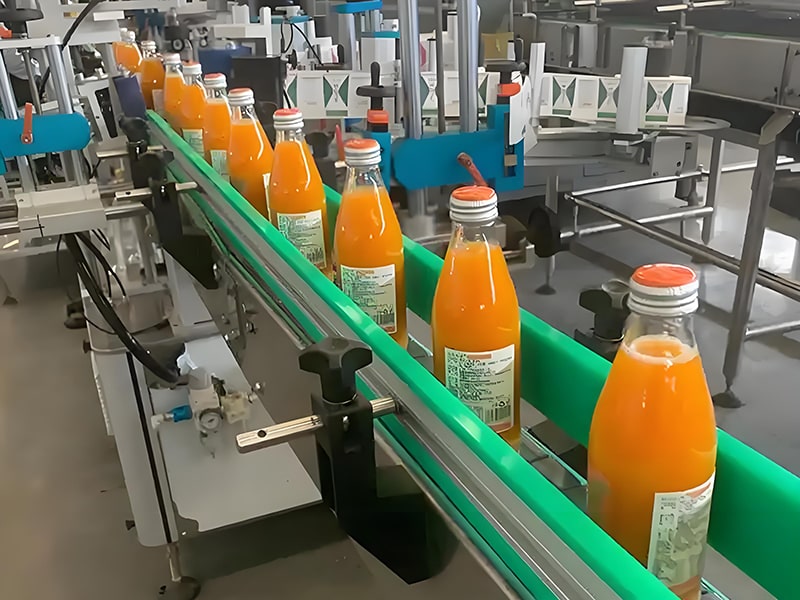 |
| Figure: An automated liquid bottling line in a modern beverage plant. The right filling machine streamlines production for products from water and juice to oils and syrups. |
What Is a Liquid Filling Machine?
A liquid filling machine (also called a flow filler or dosing machine) is equipment that dispenses liquids into containers to a set volume or weight. It is used in industries ranging from food & beverage and cosmetics to chemicals and pharmaceuticals. These machines come in many forms – from small benchtop units to large automated lines – but all aim to fill bottles, jars, pouches or cans with a pre-measured amount of liquid.
Essentially, a liquid filler automates the laborious task of pouring and measuring. As one industry source notes, “Liquid filling machines are essential equipment for any operation that packages liquid products”, whether it’s bottles of shampoo, jars of sauce, or vials of medicine. They save labor and improve consistency, ensuring each container receives the correct fill with minimal spillage. Liquid fillers can handle a wide range of products – from thin water-like fluids to thick pastes – by using different filling mechanisms. But no single machine handles every liquid. For example, a simple gravity filler may work for water or juice but cannot handle highly viscous creams or chunky sauces. Understanding how these machines work is the first step to choosing one that fits your product.
How Liquid Filling Machines Work
Liquid fillers typically move containers through a sequence: load, position, fill, verify, and discharge. During filling, the machine’s mechanism (pump, piston, gravity valve, etc.) dispenses liquid into each container. Common steps include:
- Container loading and positioning: Bottles or cans enter the filler via conveyor and are aligned under the filling nozzles.
- Filling: A dispensing mechanism meters the liquid. This may be by volume (timed flow), weight, piston displacement, or other method.
- Verification: Sensors check fill levels or weights in real time to ensure accuracy.
- Sealing or capping: Once filled, many lines immediately add caps or seals in-line.
- Discharge: Finished containers exit to the next station (labeling or packing).
The filling mechanism varies by machine type (detailed below). Gravity fillers let fluid flow down by gravity into the container, good for very free-flowing liquids. Pump fillers use a peristaltic or diaphragm pump to draw and force liquid out, adaptable to many viscosities. Piston fillers use a cylinder and piston to draw in a fixed volume of liquid and inject it under pressure – ideal for thicker products. Overflow (level) fillers fill until liquid reaches a set overflow level, ensuring uniform height (useful for thin liquids). Bottom-up (inverted nozzle) fillers fill from the bottom, slowly moving a nozzle up to reduce agitation and foaming – excellent for foamy or agitated liquids.
Modern machines range from manual benchtop fillers to fully automatic rotary systems. For instance, semi-automatic fillers require operators to place bottles by hand, while fully automatic fillers continuously handle high-speed lines. In fact, about 54% of the market is fully automated equipment, catering to large-scale production. These automated lines often integrate with robotics and IoT data systems to boost throughput and traceability.
Types of Liquid Filling Machines
There are several machine categories, each suited to certain products:
- Volumetric (Timed Flow) Fillers: These precisely dispense a set volume in each cycle. They are often used for low-viscosity, high-speed applications. Because they measure by time or pump stroke, they’re excellent for consistent, repetitive tasks where accuracy is key.
- Gravity Fillers: These rely on gravity to fill containers to a pre-set level. They work best with free-flowing liquids (water, juices, oils). Gravity fillers are simple and cost-effective; excess returns to the supply, preventing overfill. They excel in lighter products and lower-pressure systems.
- Pump (Servo) Fillers: Utilizes pumps (often servo-controlled) to meter liquid. They can handle a wide viscosity range from thin to moderately thick liquids. Pumps offer flexibility (they can be easily calibrated for different flow rates) and are great for products that may be corrosive or require gentle handling. They are a common choice for food and chemical applications.
- Piston Fillers: These draw product into a cylinder and then deposit it under pressure. Piston systems are highly versatile – they can handle watery fluids up to chunky sauces or creams. They are ideal for thick, viscous products or those with particulates (like lotions, honey, pastes) because the powerful mechanical action moves even heavy media without clogging.
- Overflow (Level) Fillers: Designed to fill containers to the same precise level, regardless of slight bottle height variations. They repeatedly overflow excess, ensuring a uniform finish line across products. Best for thin, still liquids where cosmetic fill height consistency is needed (like carbonated beverages or shampoos). They minimize splashing and foam, yielding visually even fills.
- Pressure Fillers: There are variations like pressure overflow or pressure bottom-up fillers. Semi-automatic Pressure Overflow Fillers use controlled pressure to reduce splashing and foam in low-to-medium viscosity liquids. They’re perfect for foamy products (soaps, shampoos, beers) where entrained air would cause spillage.
- Positive Displacement (PD) Fillers: Often used for very high viscosity fluids (like grease, adhesives). These are essentially heavy-duty piston/pump machines that can push thick material through big orifices.
- Aseptic/Sterile Fillers: Specialized machines used in food/drug industries. They fill under sterilized conditions (using sterile air, UV, etc.) to prevent contamination. These are essential when filling milk, juices, vaccines or injectables. Aseptic fillers extend shelf life and comply with strict regulations (e.g. FDA guidelines).
- Net-Weight (Checkweighing) Fillers: Used when you need precise weight filling. The machine weighs each container on a scale during fill. Often seen in food or chemical packaging where exact weight is critical (e.g. nutrient mixes). Because they inspect weight, they automatically reject under/overfilled items.
- Others: There are also more niche systems, like vacuum fillers for milk/juice (using vacuum pressure), time-pressure fillers, peristaltic pump fillers, and machines designed for corrosive chemicals (with special wetted parts). Each has its place based on product and regulatory needs.
Table: Common Liquid Filling Machine Types and Applications
| Machine Type | Mechanism / Style | Best For | Example Products / Notes |
| Volumetric | Timed flow or pump metering | Thin/medium liquids, high volume | Water, juices, cooking oils |
| Gravity | Simple gravity-fed nozzle | Very thin, free-flowing fluids | Water, mineral water, light oils |
| Pump (Servo) | Mechanical pump (servo motor) | Medium-to-high viscosity liquids, corrosives | Oils, chemicals, syrups |
| Piston (PD) | Cylinder + piston | High viscosity or particulate-containing liquids | Creams, lotions, sauces, gels |
| Overflow (Level) | Fill until overflow level | Consistent fill height, very thin liquids | Foamy drinks, shampoos |
| Bottom-Up | Nozzle fills from bottom | Foamy or delicate liquids (minimal agitation) | Beer, foamy dairy drinks, aerated liquids |
| Aseptic | Sterile filling unit | Sterile products requiring long shelf-life | Juices, milk, vaccines |
| Net-Weight | On-scale filling | Exact weight dosing | Food/chemicals with strict weight spec |
(Sources: industry packaging guides)
Matching Machines to Your Product
Product characteristics determine the ideal filling method. Key factors include:
- Viscosity & Thickness: Thin fluids (water-like) behave very differently than ketchup or lotion. As a rule, thin liquids often use gravity or piston fillers. Gravity or pump fillers handle low-viscosity fluids efficiently, preventing spills. Thick or chunky liquids require piston or progressive cavity (screw) pumps because they provide the force needed to move the product. For example, lotions, creams, and pastes usually go in a piston or PD filler.
- Presence of Particulates: If your liquid contains pieces (fruit pulp, grains, granules), a piston filler is usually best. The piston mechanism can push through chunks, whereas a thin nozzle might clog.
- Foaming: Some products foam up (beer, carbonated drinks, detergents, shampoos). Foamy liquids need special handling. Options include a bottom-up filler (fills from base to minimize foam) or a pressure overflow filler which gently fills and drains foam.
- Container Size/Volume: Small vials (0.1–50 mL) demand ultra-precise dosing, while large jugs (liters) need high throughput. For tiny containers, even high-precision syringe fillers exist; For very large containers, high-speed rotary fillers can reach hundreds of bottles per minute.
- Accuracy & Regulations: Pharmaceuticals and nutraceuticals demand exact doses (often down to fractions of a mL). In those cases, volume or weight fillers with fine calibration are required. Some industries also have hygiene standards (food, pharma) – machines must be stainless steel, CIP (clean-in-place) enabled, and often comply with FDA or EU regulations.
- Speed and Production Volume: Consider how many containers you need per minute/hour. Fully automatic rotary fillers can fill hundreds of bottles per minute for large beverage lines. If volumes are lower, a semi-auto or linear filler might suffice. In general, fully automatic machines led the market with ~54% share due to their high throughput.
- Type of Container: Bottles, jars, pouches, sachets, and cans each have unique requirements. Make sure the filler is configured for your container (nozzles may need changing for different neck sizes). Some machines also integrate cappers or lid applicators. For flexible pouches, special pouch fillers exist.
- Product Handling Needs: Hot-fill liquids (sauces) need heat-resistant hoppers and steam cleaning. Corrosive chemicals require special seals. Flammable solvents often use air-driven pneumatic fillers (no electrical parts contacting the liquid) for safety.
In summary, identify your product’s viscosity, particulates, foaming tendency, and any safety/hygiene requirements first. Then match to the filler style. A simple guideline from packaging experts is: “Always match the filler type to your product’s viscosity for optimal results”.
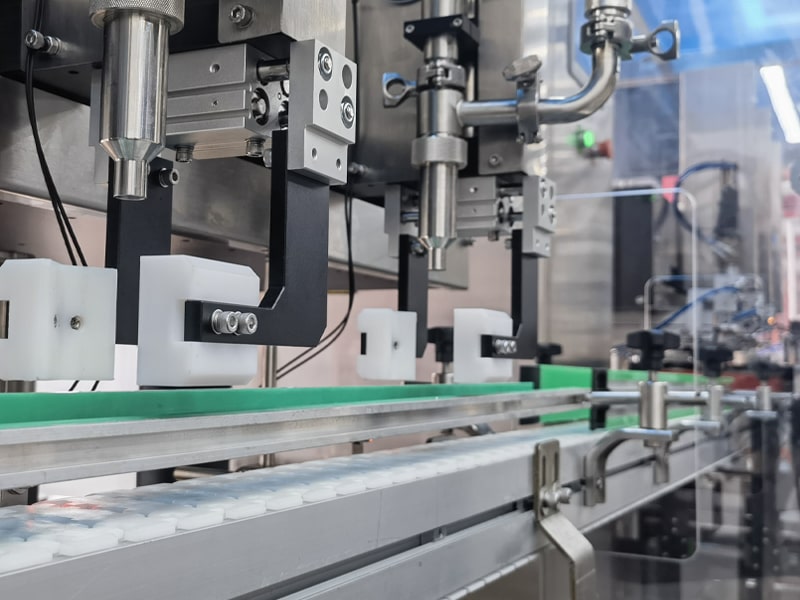
Key Considerations When Choosing
Once you’ve narrowed down filler types, evaluate these critical factors before buying:
- Accuracy & Precision: How precise must each fill be? High-precision fillers (volumetric or net-weight) have tight tolerances (e.g. ±0.5%). This is crucial for high-value or regulated products.
- Speed (Output): The machine’s rate (bottles per minute) should align with your required throughput. Fully automatic lines maximize speed; semi-auto or manual are slower.
- Flexibility: Will you run multiple products? Flexible machines that can be quickly reconfigured (nozzle changes, program settings) save downtime when switching. Also consider container variation – can it handle different sizes with minimal retooling?
- Automation Level: Full automation reduces labor but costs more. A semi-auto might be cheaper for small operations. Remember, automation not only speeds production but also improves consistency.
- Hygiene/Cleaning: Many liquid foods/medicines require easy cleaning. Machines with CIP systems, quick-release parts, and stainless construction enhance sanitation.
- Footprint & Integration: Measure available space. Rotary machines use more area; linear fillers might fit smaller lines. Also, ensure the filler can integrate with upstream/downstream equipment (conveyors, cappers, labelers).
- Compliance & Safety: Food, pharma, and chemical industries often require certifications (CE, FDA-compliant materials, GMP design, explosion-proof motors, etc.). Ensure the machine meets all relevant standards.
- Total Cost of Ownership: Look beyond sticker price. Consider maintenance needs, energy use, spare parts availability, and manufacturer support. A slightly more expensive machine with robust support and durability can save money long-term.
- After-Sales Support: Reliable technical support, spare parts availability, and training are vital. As one packaging consultant points out, strong manufacturer support “can reduce operational disruptions” and extend machine lifespan.
By carefully evaluating these factors, you’ll align the machine’s capabilities with your production goals. A high-accuracy machine boosts product quality but may be slower; a super-fast machine raises output but must maintain enough precision. Balancing speed, accuracy, and cost is key to ROI.
Industry Trends and Market Insights
The liquid filling equipment market continues evolving with technology. Several trends shape the landscape:
- Automation & Industry 4.0: Filling lines are getting smarter. Fully automatic fillers now often include IoT connectivity, allowing real-time monitoring of fill levels, machine status, and predictive maintenance. As one report notes, “manufacturers adopting Industry 4.0 technologies, such as IoT-enabled machines and robotics, to remain competitive”. This drives efficiency and traceability in production.
- Sustainability & Efficiency: Energy-efficient designs and waste reduction (via precise filling) are priorities. Aseptic and rotary fillers, for example, can improve product shelf life and reduce spoilage. Governments and consumers increasingly demand eco-friendly packaging, influencing filler design (e.g. low-power pumps, minimal purge volumes).
- Customization and Niche Solutions: While large players dominate share, many SME manufacturers offer specialized fillers for unique applications (pharma biotech, cosmetics lab scales, etc.). This means a wide choice of machines tailored to niche products, so look beyond just the mainstream solutions.
- Growing Segments: Certain industries are driving demand. The beverage sector (especially RTD drinks and dairy alternatives) is expanding rapidly, pushing filler shipments. The pharmaceutical/biotech field also calls for advanced aseptic solutions due to the rise in liquid medicines and vaccines.
- Regional Growth: Asia-Pacific is the fastest-growing market (APAC projected ~9% CAGR) thanks to rising middle-class consumption and “Make in India/China 2025” initiatives. Europe’s market (about 27%) is growing too, driven by strict hygiene and recycling regulations. North America (~25% share) remains strong with innovation and high consumption. Knowing these trends can help you understand technology directions – e.g. more aseptic equipment in Asia or more eco-friendly designs in Europe.
Market Snapshot
- The global market is forecast to reach $10.4–10.6 billion by 2029–2032, up from ~$6.9–8.7B in 2021–2023.
- Regionally (estimates for 2023–2024): Asia-Pacific leads (~30% share), followed by Europe (~27%) and North America (~25%). Latin America and MEA make up the rest. (See chart below.)
Global filling equipment market share by region (2023-2024) - By Technology: Volumetric fillers hold the largest share (around 39% of revenue in 2023) because of their versatility for beverages and sauces. Fully automatic machines dominate the automation segment (54% of market) due to high-speed needs.
- Major Players: Many specialized equipment makers serve targeted sectors with tailored machines.
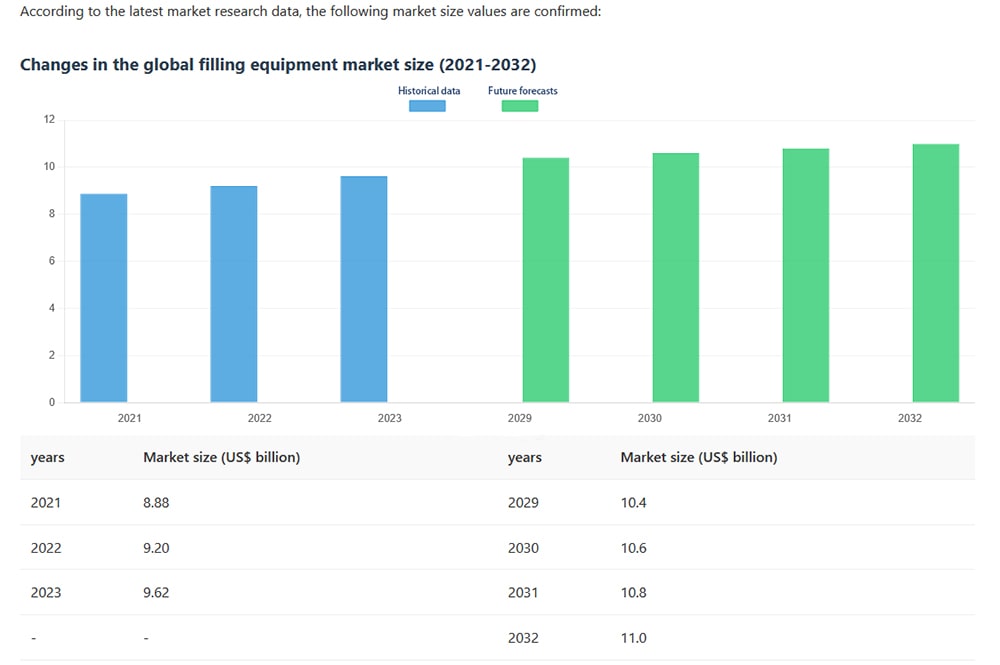 |
|
| Figure: Global liquid filling machine market by region (2023 est.). Asia-Pacific leads with ~30% share, driven by rapid growth in beverage and pharmaceutical sectors. |
Choosing the Best Machine for Your Product
Given all these variables, how do you narrow down to “the best” liquid filling machine for your product? Here’s a step-by-step approach:
- Classify Your Product: Is it water-thin or syrupy? Viscous with particles? Foamy? Flammable? Each category suggests a machine family. For example:
- Thin/clear liquids (water, juice, cosmetics lotions) → consider volumetric, gravity, or servo pump fillers.
- Oils and creams → timed flow volumetric or screw pump fillers (some vendors have specific oil fillers).
- Thick pastes, gels, sauces → piston fillers or positive-displacement pumps.
- Products with chunks (nuts in syrup, fruit pieces) → piston fillers.
- Foamy beverages/soaps → pressure overflow or bottom-up fillers.
- Tiny pharmaceutical doses → micro-dose syringe or peristaltic fillers.
- Flammables → pneumatic fillers with no electrical parts touching liquid.
- Define Capacity and Speed: Estimate your batch sizes and cycle times. If you need 100+ bottles/min, look at automatic rotary fillers. For a few dozen/min, a semi-auto might suffice.
- Precision Needs: If you require ±0.1 mL accuracy (pharma or high-value liquids), ensure the machine is rated for that precision. Net-weight or advanced volumetric systems usually guarantee tight tolerances.
- Check Material Compatibility: Make sure the machine’s wetted parts (seals, hoses, nozzles) are compatible with your liquid. Corrosive chemicals or food-grade products often need specific alloys or plastics.
- Consider Budget vs. ROI: Balance initial cost against long-term efficiency gains. A robust machine from a reputable supplier may cost more upfront but pay off with lower downtime and maintenance.
- Visit Suppliers: Request demos or trials. Good manufacturers will test your product on their machines. You can see firsthand if the machine fills your product cleanly and consistently.
By following this process and consulting experts, you can identify a few candidate machines. From there, compare specs (speed, accuracy, CIP capability, etc.) and even visit production lines. Ultimately, the “best” machine is one that fits your specific liquid and workflow, meets quality standards, and provides reliable uptime.
Conclusion
Selecting the best liquid filling machine is a decision that requires understanding both your product and the technology. Modern liquid fillers range from simple semi-automatic gravity fillers to sophisticated fully automatic rotary lines with IoT controls. The right choice depends on viscosity, container type, required precision, throughput, and sanitary needs. Industry research confirms that the filling equipment market is diverse and growing, with new trends in automation and regional demand patterns.
By focusing on your product’s characteristics – as we’ve outlined above – and using objective criteria (speed, accuracy, flexibility), you can narrow the field. In the end, the optimal liquid filling machine will increase efficiency and consistency in your packaging process, giving your product the packaging quality it deserves.
At SFXB(XueBaPack), we leverage decades of packaging expertise and a global perspective to offer tailored filling solutions. Our machines are built for durability and precision, backed by comprehensive after-sales support. Whether you need a compact semi-auto filler or a high-speed turnkey line, we can match a solution to your needs and ensure it performs reliably in your operation.
Frequently Asked Questions (FAQ) about Liquid Filling Machine
1. What is a Liquid Filling Machine and how does it work?
A liquid filling machine dispenses pre‑measured volumes or weights of liquid into containers by using gravity, pumps, pistons, or overflow mechanisms. Container feeding, positioning, filling, verification, and discharge occur in sequence, and accuracy is ensured through sensors or metering logic. Machines may be manual, semi-automatic, or fully automatic depending on throughput needs.
2. What are the main types of liquid filling machines and when should I use them?
Common types include:
● Gravity Fillers: ideal for water-like ultra-thin liquids.
● Volumetric (Timed‑Flow): high speed for thin/medium liquids.
● Pump Fillers: flexible, handles low to medium viscosity and corrosive liquids.
● Piston Fillers: best for high-viscosity or particulate-rich liquids.
● Overflow Fillers: ensure uniform liquid level for foamy or transparent products.
● Specialized options also include aseptic, net‑weight, vacuum, or positive-displacement systems.
3. How do I select the best filling principle for my product?
Choose based on:
● Viscosity (thin vs. thick)
● Particulates (such as pulp or chunks)
● Foaming properties
Thin liquids may use gravity or volumetric fillers; thick lotions or sauces are better for piston or positive-displacement pumps; foamy products call for overflow or bottom-up fillers.
4. Can liquid filling machines handle different container sizes?
Yes. Most machines support a wide range of bottle shapes and sizes and are designed for tool-less changeovers. For very small or very tall containers, custom solutions may be needed.
5. How fast can a liquid filling machine fill bottles?
Speed depends on automation and fill-head count; for example, an 8‑head filler running at 4 cycles/min can reach ~32 bottles per minute (~1,900 bottles/hr). Semi‑automatic systems rely on operator speed.
6. How easy is cleaning and maintenance?
Most modern fillers offer CIP (Clean‑In‑Place) systems for automated sanitation. Semi‑automatic models usually require flushing after use. All are designed to simplify access to wetted parts for maintenance.
7. Are liquid filling machines customizable?
Yes. Many manufacturers offer options for format flexibility, automation levels, container compatibility, integrated capping/labeling, and even special wetted materials (e.g. FDA-grade stainless steel, pneumatic pumps for flammable liquids, etc.).
8. What accuracy can I expect from a liquid filling machine?
Accuracy varies by technology: ● Volumetric, peristaltic, and net-weight fillers often achieve high precision (error margins under 1%). ● Precision is essential for regulated industries like pharmaceuticals, where dosing tolerances are tight.
9. Can liquid filling machines integrate with existing production lines?
Absolutely. Fillers can be integrated with conveyors, cappers, labelers, and coding machinery. Full automation and modular design allow machines to evolve with growing production needs.
10. What safety and hygiene features should I look for?
Look for:
● Emergency-stop buttons, safety guards.
● Food-grade materials, CIP/SIP capability.
● Features compliant with relevant regulations (FDA, CE, GMP).
● Pneumatic or explosion-proof options for flammable or corrosive liquids.
| References: | |
| 1. | Liquid Filling Machines Market Size, Share & Industry Analysis ——Retrieved from:Fortune Business Insights |
| 2. | Automatic Liquid Filling Machine Market Trend Analysis ——Retrieved from:Mordor Intelligence |
| 3. | Automatic Piston Filling Machine Market ——Retrieved from:Credence Research |
| 4. | Pharmaceutical Filling Machine Market Size, Share, Growth, and Industry Analysis ——Retrieved from: Global Growth Insights |



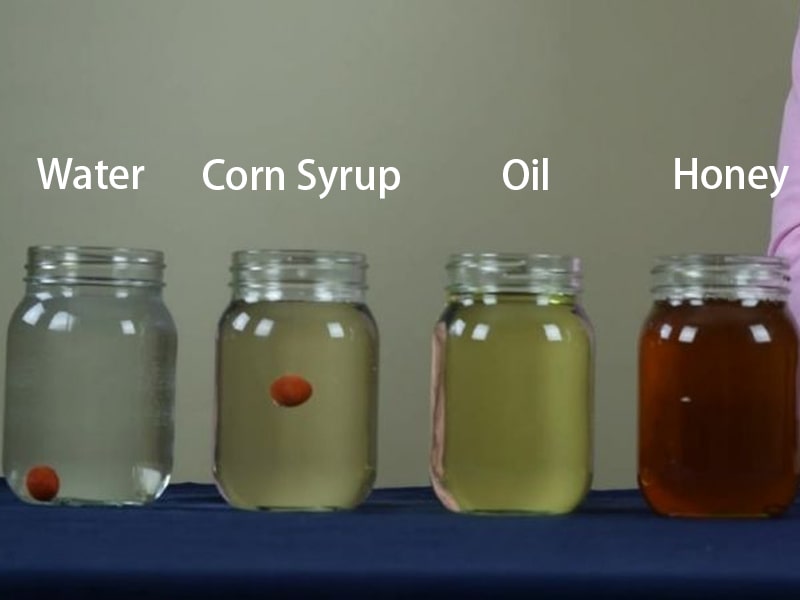

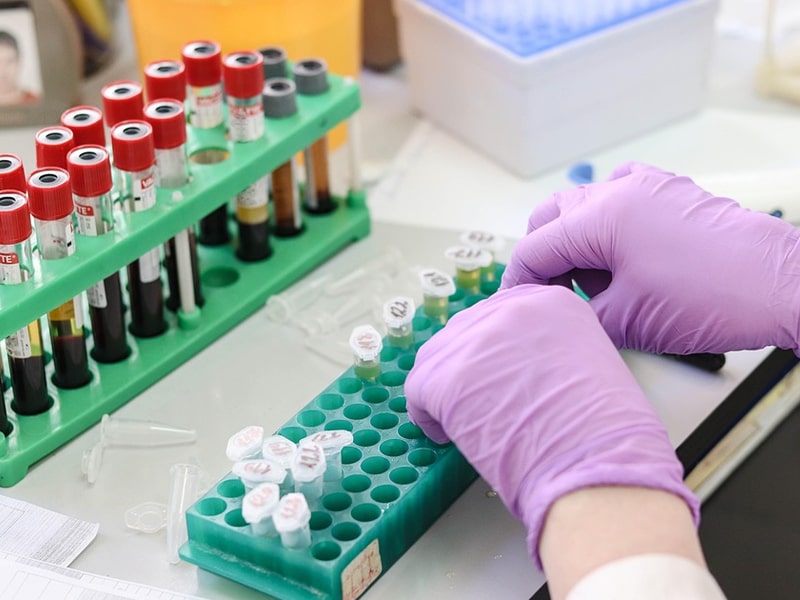

Comments